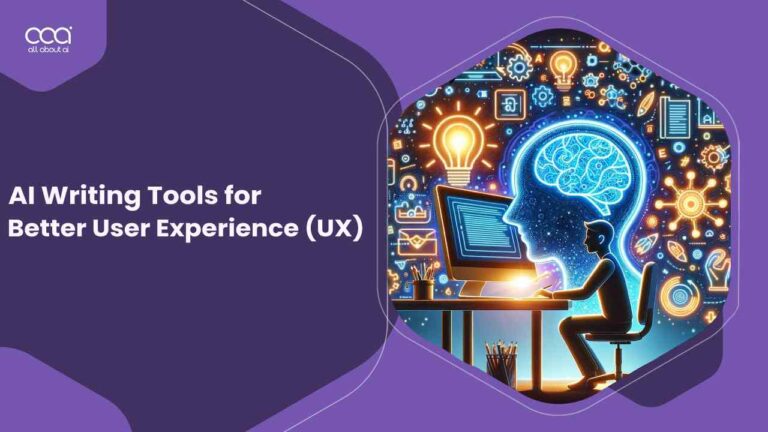AI writing tools are transforming UX writing by offering unprecedented support in creating content that not only resonates with users but also enhances their interaction with digital products. There are several best AI writing tools, powered by advanced algorithms that that analyze user data to produce tailored content suggestions, automate repetitive tasks, and ensure consistency across various platforms.
In this article, I’ll discuss how to use AI tools for better user experience writing as a step-by-step guide. I will also explain how AI tools assist in this task, as well as different AI tools for it.
How to Use AI Tools for Better User Experience Writing : Step-By-Step Guide
Integrating AI writing tools into your UX writing process can significantly enhance the creation, optimization, and management of content. Here’s a step-by-step guide on how to use AI tools for better user experience writing.
Step 1: Select the Right AI Writing Tool
Begin by exploring AI writing tools that cater to a range of needs, from content writing to grammatical corrections and SEO optimization. Look for tools that integrate seamlessly with your current workflow and offer functionalities that specifically benefit UX writing, such as user-centric content generation and tone consistency.

Step 2: Define Your Content Requirements
Clarify your content goals by understanding your target audience’s needs, behaviors, and preferences. Determine the purpose of each piece of content, whether it’s to inform, engage, convert, or retain users. Outline the types of content required, such as help articles, product descriptions, or UI microcopy, ensuring each aligns with overarching UX and business objectives.
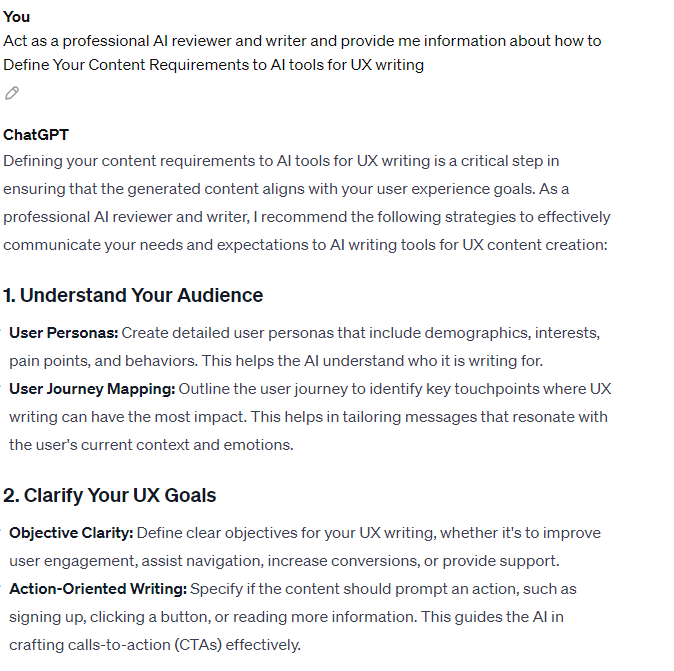
Step 3: Use AI for Ideation and Brainstorming
Leverage your chosen AI tool to kickstart the ideation process by inputting themes, user demographics, and content goals. The tool can then generate a variety of ideas, headlines, and content structures. This process enables rapid exploration of creative concepts and strategic content directions, helping to break through creative blocks and align content with user expectations.
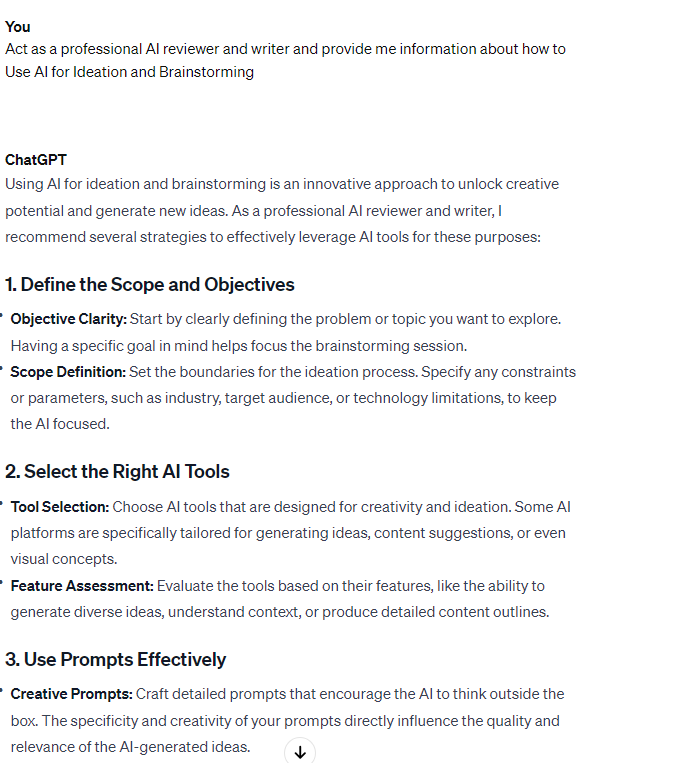
Step 4: Create and Structure Your Content
Utilize AI to draft content based on your refined ideas and outlines, exploring how to use AI tools for better user experience writing. AI tools can help organize content in a logical, user-friendly manner, ensuring information is easily digestible and actions are clear. Personalize and tweak AI-generated drafts to ensure they fully capture your brand’s voice and meet specific user needs, making adjustments based on the content’s context within the user journey.
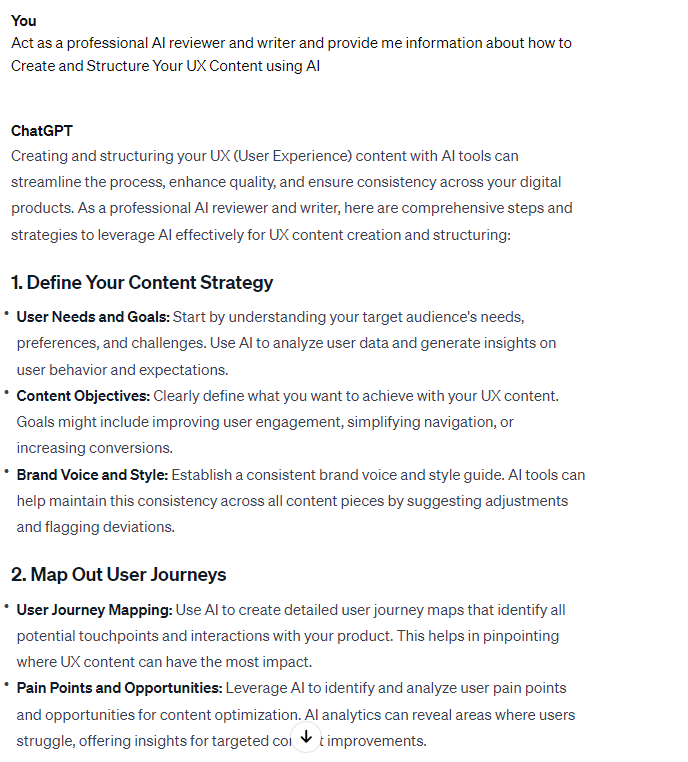
Step 5: Optimize Content for UX and SEO
After creating the initial drafts, review the content for clarity, coherence, and alignment with UX principles. Use AI tools to enhance the content’s SEO, incorporating keywords naturally and optimizing meta tags to improve discoverability. Ensure consistency across all content in terms of tone, style, and messaging to reinforce brand identity and contribute to a seamless user experience.
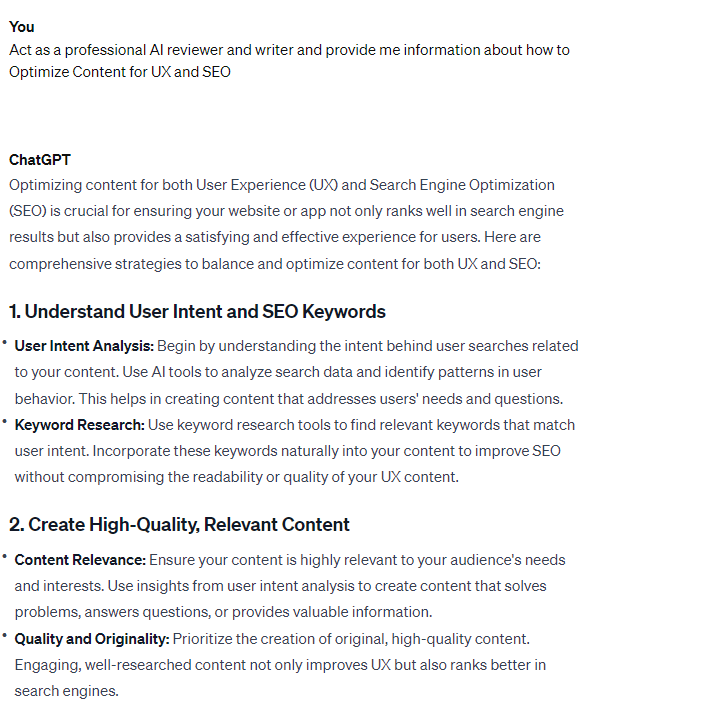
Step 6: Evaluate and Revise Based on Feedback
Gather user feedback through surveys, usability tests, and analytics to assess how effectively the content meets user needs. Use AI to analyze content performance, identifying which pieces resonate with users and why. Based on this analysis, revise and update content to better align with user preferences, iterating on strategies to enhance the UX continually.
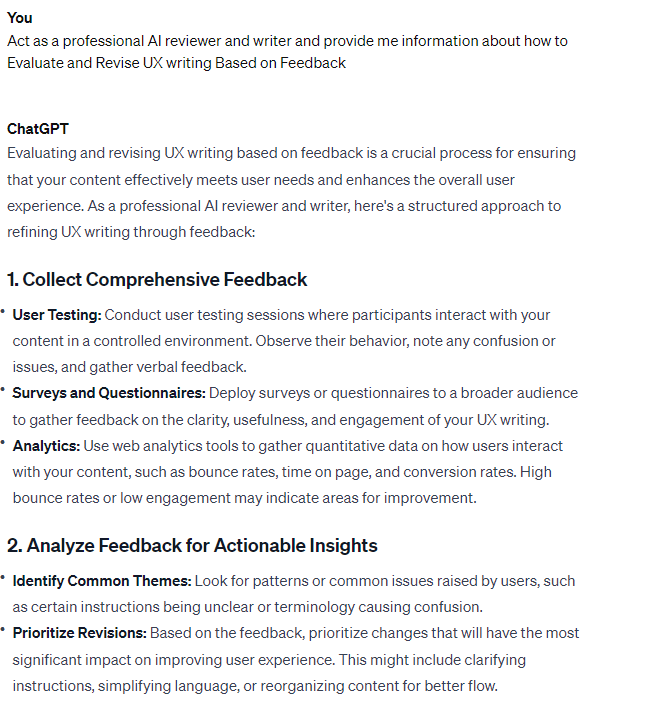
Step 7: Continuously Monitor and Update Content
Regularly use AI tools to scan and update content, ensuring information remains accurate and relevant, as part of how to use AI tools for better user experience writing. Stay attuned to trends in user behavior and market dynamics to adapt content strategy accordingly. This ongoing monitoring and updating process, supported by AI, helps maintain a dynamic and engaging user experience that evolves with user needs and business goals.
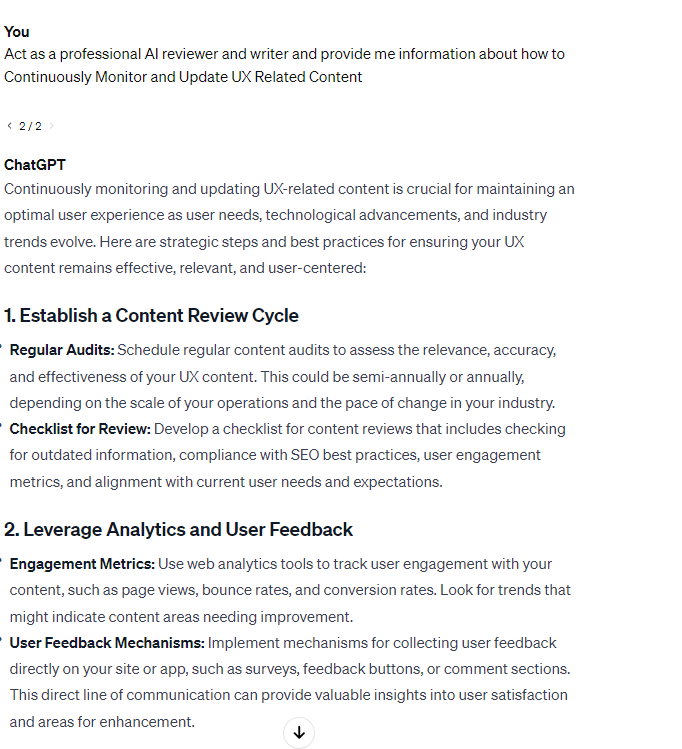
What is UX Writing?
UX writing is crafting text users see and interact with on digital platforms. It plays a crucial role in guiding users, enhancing usability, and improving the overall user experience. The aim is to communicate effectively with users, guiding them through their digital journey easily and clearly.

- User Guidance: UX writing helps users navigate digital products, providing clear instructions and reducing frustration.
- Brand Voice: It embodies the brand’s personality in the digital space, making interactions more human and relatable.
- User Understanding: Effective UX writing is based on a deep understanding of user behavior, preferences, and challenges, aiming to address them through concise and impactful text.
- Efficiency and Clarity: The focus is on making complex processes simple, ensuring users can achieve their goals with minimal effort.
- Engagement: Engaging UX copy encourages users to explore further, increasing retention and satisfaction.
How Can AI Writing Tools Help in the UX Writing Process?
AI writing tools are revolutionizing the UX writing process by automating and enhancing content creation, making it more efficient, personalized, and user-friendly. By leveraging machine learning and natural language processing, these tools can significantly improve how content is conceptualized, developed, and optimized for user experiences.

1. Enhancing Efficiency and Productivity
AI writing tools streamline the content creation process, enabling UX writers to produce high-quality content efficiently.

- Rapid Content Generation: AI tools can quickly generate drafts, headlines, and content ideas, reducing the time spent on initial content creation.
- Automated Research: They can compile and summarize relevant information, saving hours of manual research.
- Content Optimization: AI assists in optimizing content for readability and engagement, ensuring it meets the highest UX standards.
2. Personalizing User Experience
Personalization is key to engaging user experiences. AI writing tools analyze user data to tailor content, making interactions more relevant and impactful.

- User Behavior Analysis: AI tools study user behaviors and preferences to suggest content adjustments.
- Dynamic Content Customization: They dynamically adjust content in real-time based on user interactions, enhancing the personalization of the UX.
- Segmentation and Targeting: Artificial Intelligence enables content to be customized for different user segments, improving the effectiveness of communication strategies.
3. Ensuring Consistency Across Platforms
Consistency in tone, style, and messaging across all user touchpoints is crucial for a cohesive brand experience. AI writing tools can maintain this consistency effortlessly.

- Style and Tone Adherence: AI tools can be programmed to follow specific style guides, ensuring all content aligns with brand standards.
- Cross-platform Consistency: They ensure content remains consistent across various platforms, from web to mobile apps, enhancing brand recognition.
- Automated Content Updates: AI can update content across platforms simultaneously, ensuring all information is current and consistent.
4. Improving Content Quality
Quality content is the cornerstone of effective UX writing. AI tools help maintain high standards of grammar, clarity, and engagement.

- Grammar and Syntax Checks: Advanced algorithms catch and correct grammatical errors, improving the overall readability of content.
- Content Clarity: AI evaluates content for clarity and conciseness, suggesting improvements where necessary.
- Engagement Metrics: By analyzing engagement data, AI tools suggest content adjustments to increase user interaction and satisfaction.
5. Supporting Multilingual Content Creation
As businesses expand globally, the ability to create content in multiple languages becomes essential. AI writing tools facilitate this process with ease.

- Automated Translation: AI tools provide accurate translations, making content accessible to a global audience.
- Cultural Customization: They adapt content to fit cultural nuances, ensuring it resonates with users from different backgrounds.
- Scalability: AI enables the scaling of content creation across languages without compromising quality or consistency.
Brainstorm Ideas at Scale with AI Tools
Leveraging AI tools for brainstorming can significantly amplify the creative process, allowing UX writers to generate a wide array of ideas quickly and efficiently. These tools use data and algorithms to suggest content themes, headlines, and user prompts, making it easier to kickstart the writing process with fresh, innovative concepts.
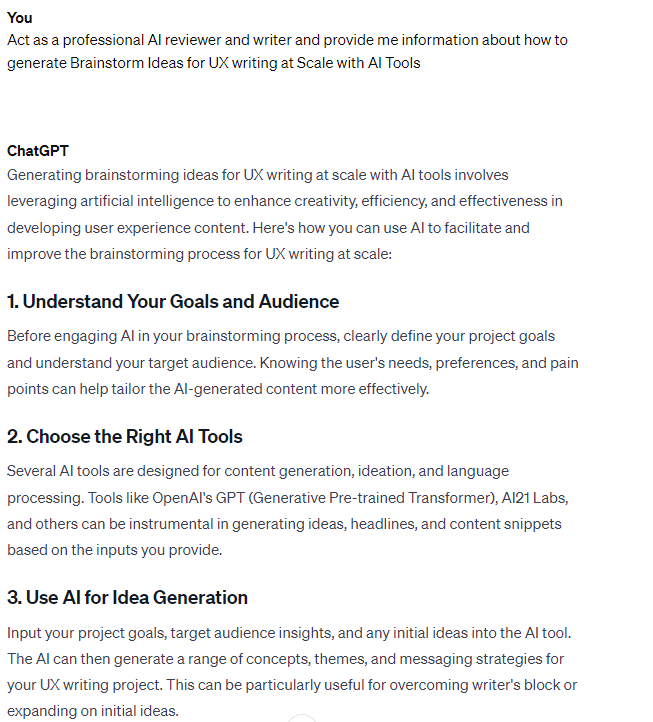
- Endless Creativity: AI tools offer an infinite pool of content ideas, breaking free from the limitations of human brainstorming sessions.
- Data-Driven Insights: By analyzing user data and trends, AI can propose ideas that are more likely to engage and convert, ensuring content is aligned with audience interests.
- Speed and Efficiency: Generate hundreds of content ideas within seconds, drastically reducing the time typically required for brainstorming.
- Diversity of Perspectives: AI introduces a range of perspectives and themes, enriching the creative process with varied and unique ideas.
- Customization and Relevance: Tailor brainstorming outputs to specific user segments or product features, ensuring high relevance and personalization.
Creating Templates or Structuring Information with AI
AI tools simplifies the creation of templates and the structuring of information, making it straightforward to organize content in a user-friendly manner. By providing a structured framework, AI helps UX writers craft content that is not only informative but also easy to navigate and understand.
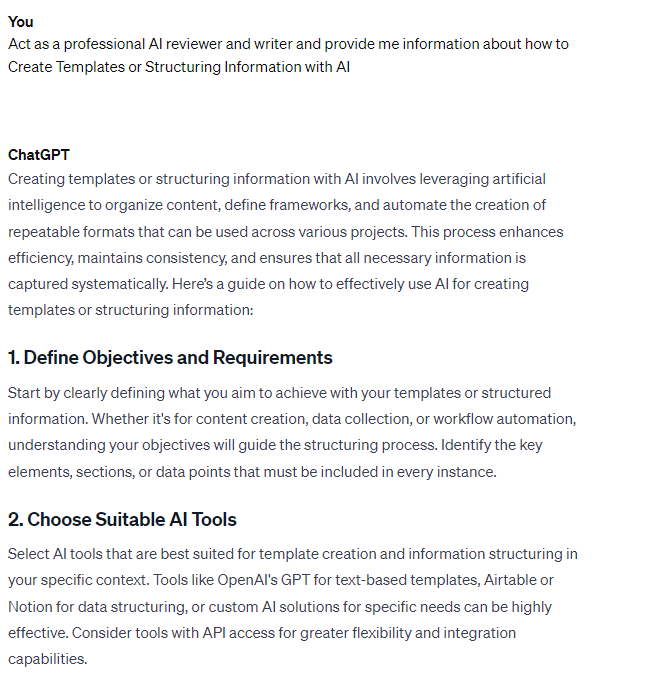
AI excels in automating the smaller, labor-intensive tasks that, while crucial, can consume a significant amount of time. This automation allows UX writers and designers to focus on more strategic aspects of UX, improving efficiency and productivity.
- Automated Updates: Keep content like FAQs and help documentation up-to-date with minimal effort, ensuring users always have access to the latest information.
- SEO Optimization: Automatically optimize content for search engines, increasing visibility without manual tweaking.
- Error-Free Writing: Use AI to detect and correct grammatical errors, maintaining high content quality with less time spent on proofreading.
- Real-Time Content Adaptation: Implement changes quickly based on analytics and user feedback, keeping the content relevant and effective.
- Efficient A/B Testing: Test various content versions automatically to identify the most effective approach for user engagement.
Handling Small, Time-Consuming Tasks with AI: A Detailed Example
Managing a customer service portal for a large e-commerce website, which includes a comprehensive FAQ section, product guides, and troubleshooting articles. The challenge is keeping this information up-to-date with hundreds of products and constant updates.
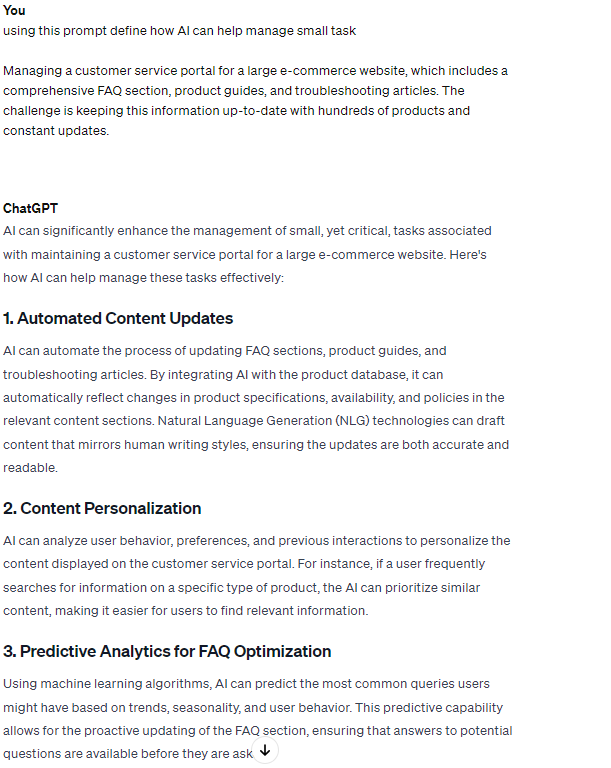
How AI Assists
Automated Content Updates: An AI tool regularly scans product information updates from the inventory management system. Whenever a product is updated, discontinued, or a new one is added, the AI automatically updates the relevant sections of the FAQ and product guides, adding new entries or archiving obsolete ones without manual intervention.
SEO Optimization: The AI tool periodically reviews the content across the customer service portal, optimizing it for search engines. It adjusts keywords based on search trends, ensuring users find the information through search engines easily.
Quality Assurance Checks: The AI conducts nightly scans of the portal for grammatical errors, broken links, or outdated information. It either fixes simple issues automatically or flags them for review by the human team, ensuring the portal maintains a high standard of accuracy and usefulness.
Benefit: This automated approach significantly reduces the manual workload involved in maintaining an extensive customer service portal. It ensures the information is always current, accurate, and optimized for search engines, enhancing the customer experience and reducing the volume of direct customer service inquiries.
Some Useful Tools To Consider For UX Writing
In the realm of UX writing, leveraging the right AI writing tools can substantially enhance the clarity, engagement, and effectiveness of your content. These tools not only assist in refining the text but also ensure that it aligns well with user expectations and enhances the overall user experience. Below, we delve deeper into three widely acclaimed tools, providing a brief overview and their advantages and disadvantages.
Grammarly
Grammarly is an advanced writing assistant that offers comprehensive support in enhancing the quality of your writing. It reviews your text for grammatical errors, tone inconsistencies, and clarity issues.

Pros:
- Enhanced Accuracy: Grammarly’s sophisticated algorithm detects and corrects complex grammatical errors, ensuring high writing standards.
- Tone Adjustment: It analyzes the tone of your text, providing suggestions to match the desired communication style, crucial for UX writing.
- Plagiarism Checker: An invaluable feature for ensuring content originality, Grammarly scans your text against billions of web pages.
Cons:
- Subscription Cost: While there is a free version, the most valuable features require a premium subscription, which may be a barrier for some users.
- Over-dependence: Relying too heavily on Grammarly might hinder the development of one’s own proofreading skills.
- Contextual Limitations: Sometimes, Grammarly’s suggestions may not perfectly align with specific contextual nuances, requiring manual oversight.
Hemingway Editor
The Hemingway Editor is designed to make your writing bold and clear, mirroring the style of the famous author Ernest Hemingway. It highlights complex sentences and common errors that can make your text hard to read, encouraging a more straightforward and impactful writing style.
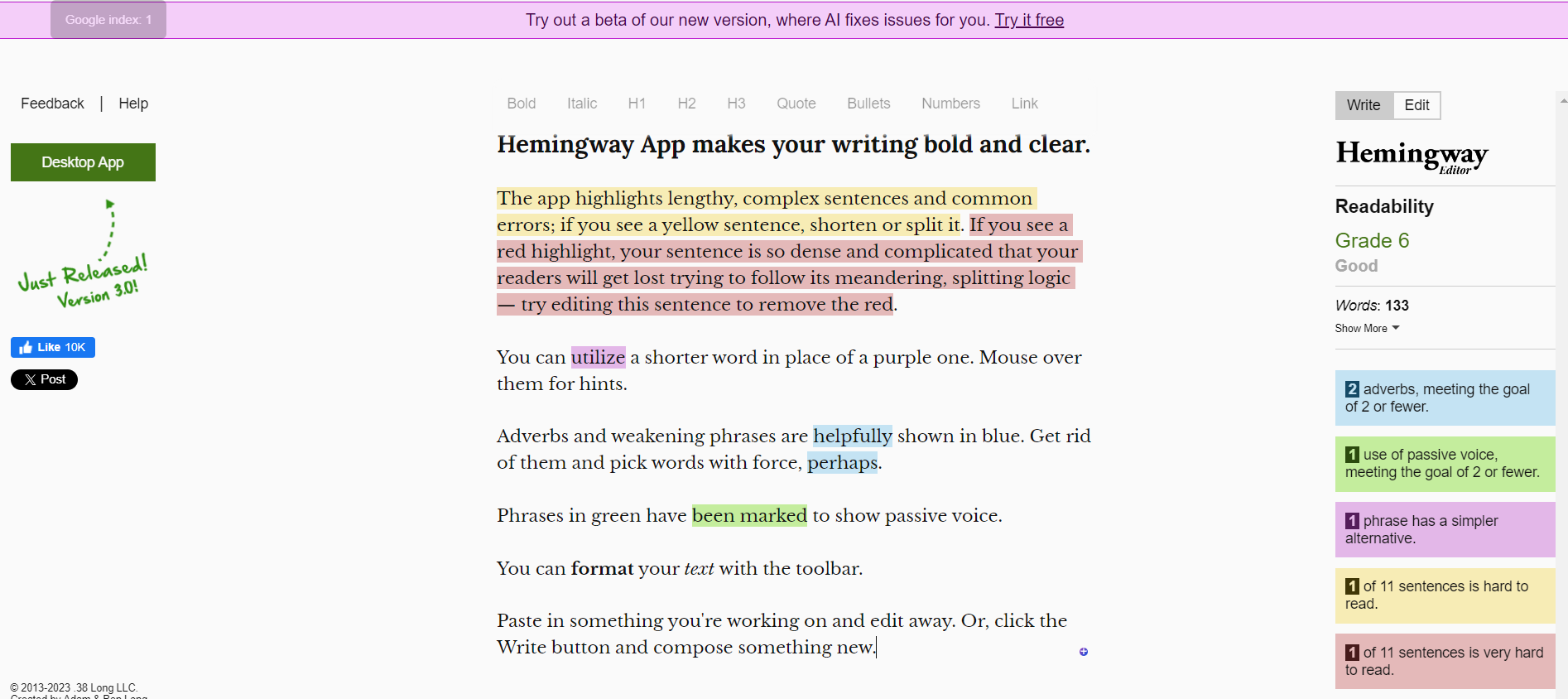
Pros:
- Simplicity Focus: Encourages clear and concise writing, which is especially beneficial for UX writing where clarity is paramount.
- Readability Grade: Offers an immediate readability score, helping writers adjust their content to suit their audience’s reading level.
- No Subscription Required: Hemingway offers a free online version, making it accessible to everyone without any cost.
Cons:
- Lack of Grammar Checking: Unlike Grammarly, Hemingway does not focus on grammatical errors, which may necessitate using an additional tool for grammar checks.
- Limited Feedback: The tool focuses mainly on simplicity and readability, offering less comprehensive feedback on writing style or tone.
- Desktop App Cost: While the online version is free, the desktop app requires a one-time purchase, which may not offer significant additional value over the online version.
Copy.ai
Copy.ai is an AI-powered content generation tool that excels in producing creative and engaging content. From blog posts to UX microcopy, it provides writers with many templates and customization options, streamlining the content creation process.
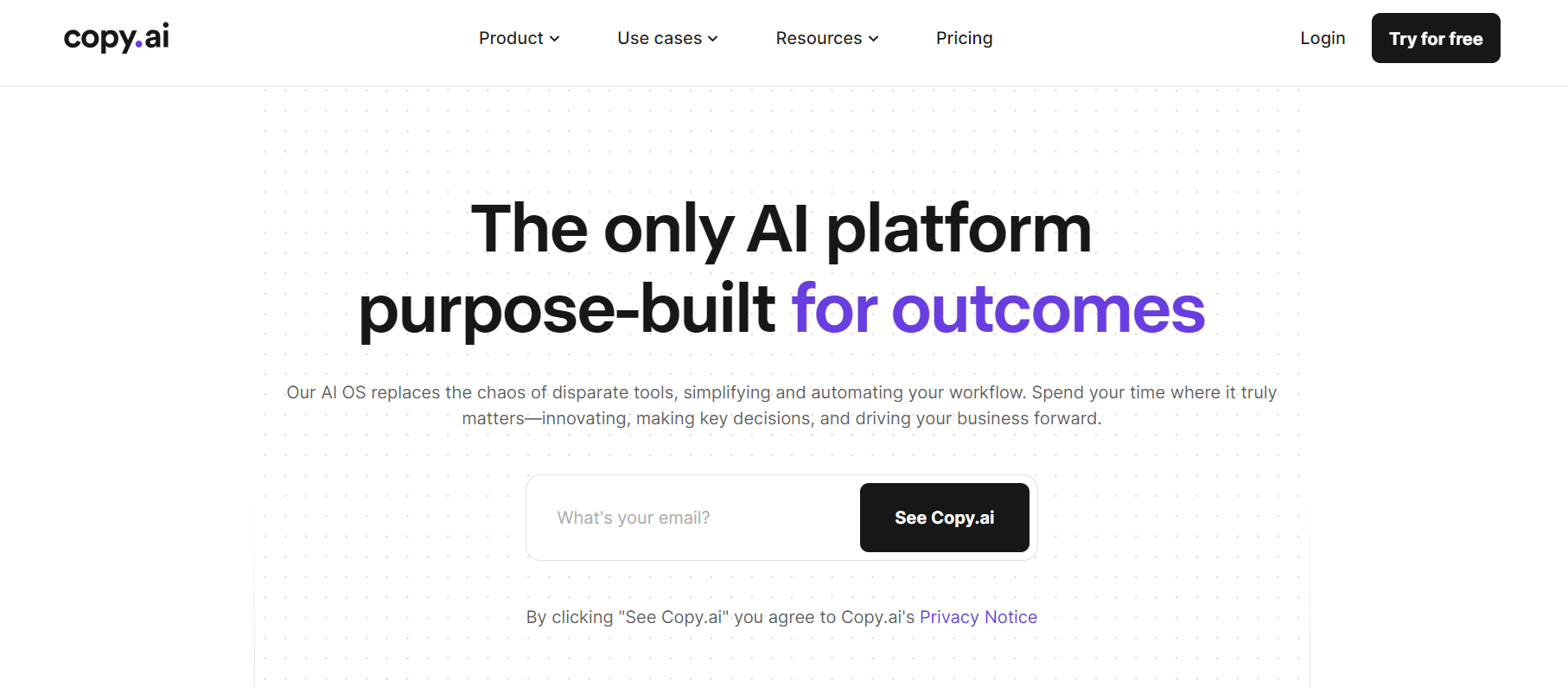
Pros:
- Idea Generation: Ideal for overcoming writer’s block, Copy.ai can generate a wide range of content ideas and drafts quickly.
- Customization Options: Offers the ability to customize outputs based on specific prompts, allowing for tailored content creation.
- Diverse Content Types: With templates for everything from social media posts to product descriptions, it supports a wide variety of content needs.
Cons:
- Creativity Limitations: While Copy.ai is powerful, the content generated may still require significant editing to ensure it meets specific creative standards.
- Over-reliance Risk: There’s a risk of becoming too reliant on automated content, which may lead to a decrease in originality over time.
- Subscription Cost: To access the full range of features and unlimited use, Copy.ai requires a subscription, which may be a consideration for budget-conscious users.
FAQs
Here are some of the most commonly asked questions about how to use AI tools for better user experience writing.
Can AI replace UX writers?
Is UX safe from AI?
Will AI overtake UX design?
Which is better, UX or AI?
Conclusion
AI writing tools are reshaping the landscape of UX writing, offering solutions that enhance content creation, personalization, and optimization. By integrating AI into their workflow, UX writers can not only save time but also create more impactful, user-centric content. As we’ve explored, these tools support a broad spectrum of tasks—from ideation to structure and maintenance, making them indispensable in the modern UX writer’s toolkit.
Now that you know how to use AI tools for better user experience writing, doesn’t mean your exploration journey should end here. To learn more about how to uplift your AI writing and planning game, check out the rest of the articles we’ve written for the how-to guides and our AI glossary on allaboutai.com.

